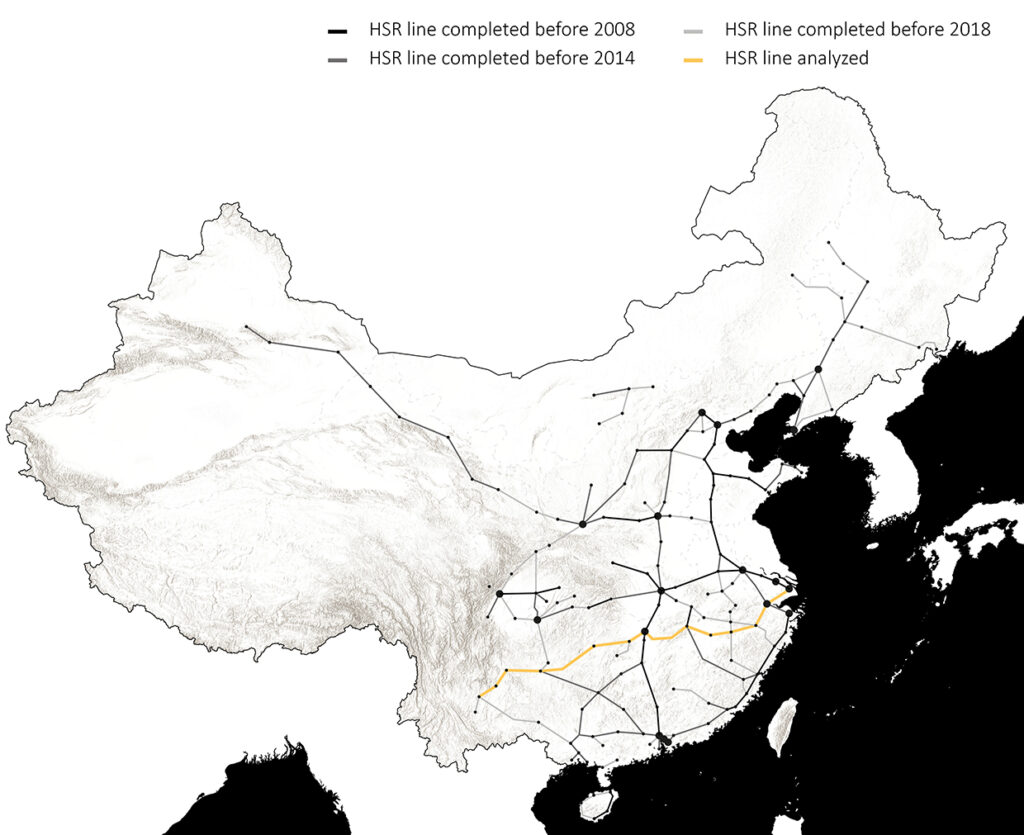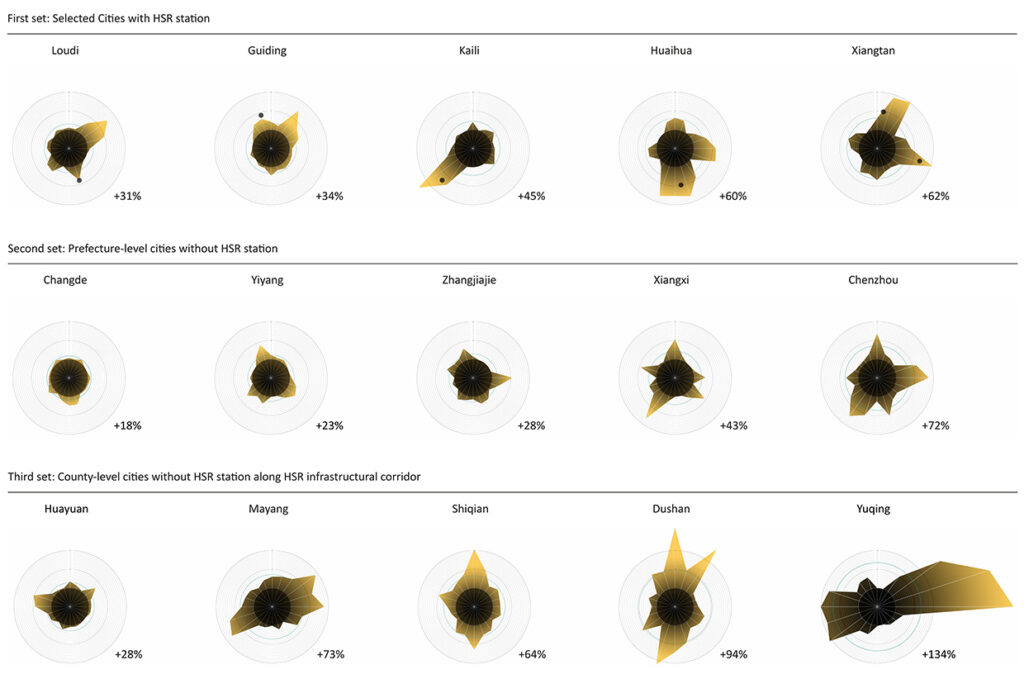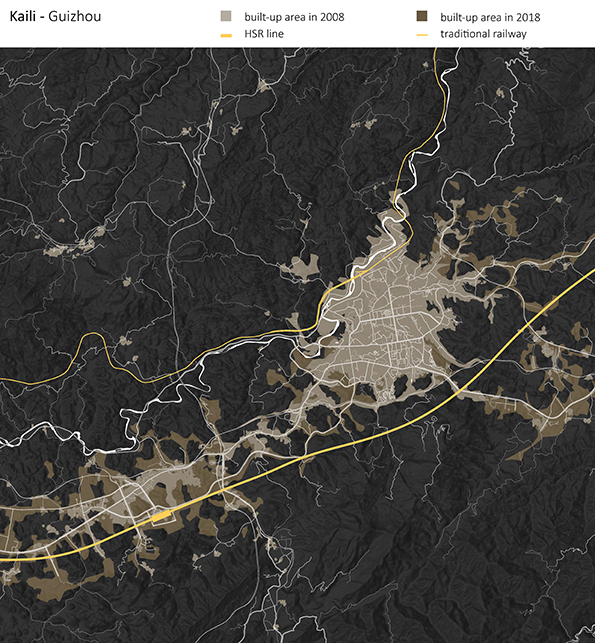The research High-Speed China: Chinese Urbanization and the Role of High-Speed Railway has been carried on by the China Room Research Group – Politecnico di Torino, the MIT Sustainable Urbanization Lab and MIT Senseable City Lab. The first stage of the project was financed by the Seed Funding Program MITOR 2018, and it was carried through several exchange periods between the two universities researchers. The new Chinese high-speed railway line represents one of the largest and most ambitious infrastructural plans of the last two decades. Launched by the Chinese Government in 2007, it has the objective of reconnecting those territories that were partially excluded from processes of rapid urbanization. After little more than ten years from its beginning, the infrastructural plan comprehends now more than 29.000 km of high-speed network, which counts for the 64% of the total high-speed railways worldwide.
The research aims to investigate what the impact of high-speed rail in China’s recent urbanization is, and tries to answer questions like: What effects do HSR networks have on urban form? And what effects do they have on the factors determining urban vibrancy? The diversified competencies of the three research centres allowed to investigate the phenomenon of Chinese urbanization, and its effects on small towns urban fabrics, through a multidisciplinary approach, based on both qualitative and quantitative analysis of spatial and macroeconomic data.
Type of work
Funded Research Project
Year
2020
Role
Post-Doctoral Fellow
Collaboration
Politecnico di Torino, MIT Senseable City Lab, MIT Future City Lab
Location
Turin, Boston
Press/Pubblications

ABSTRACT
The research High-Speed China: Chinese Urbanization and the Role of High-Speed Railway has been carried on by the China Room Research Group – Politecnico di Torino, the MIT Sustainable Urbanization Lab and MIT Senseable City Lab. The first stage of the project was financed by the Seed Funding Program MITOR 2018, and it was carried through several exchange periods between the two universities researchers. The new Chinese high-speed railway line represents one of the largest and most ambitious infrastructural plans of the last two decades. Launched by the Chinese Government in 2007, it has the objective of reconnecting those territories that were partially excluded from processes of rapid urbanization. After little more than ten years from its beginning, the infrastructural plan comprehends now more than 29.000 km of high-speed network, which counts for the 64% of the total high-speed railways worldwide. The research aims to investigate what the impact of high-speed rail in China’s recent urbanization is, and tries to answer questions like: What effects do HSR networks have on urban form? And what effects do they have on the factors determining urban vibrancy? The diversified competencies of the three research centres allowed to investigate the phenomenon of Chinese urbanization, and its effects on small towns urban fabrics, through a multidisciplinary approach, based on both qualitative and quantitative analysis of spatial and macroeconomic data.



